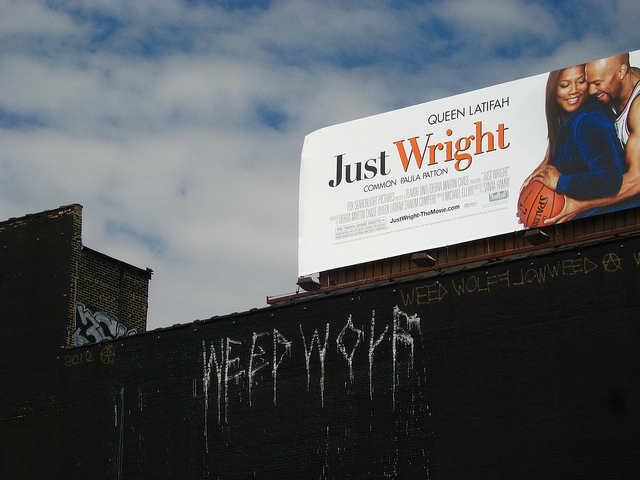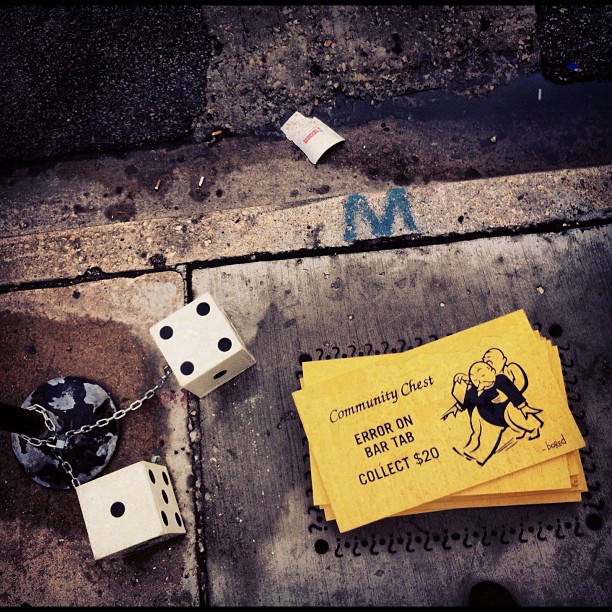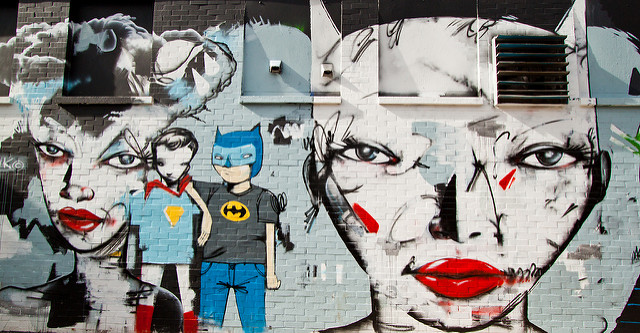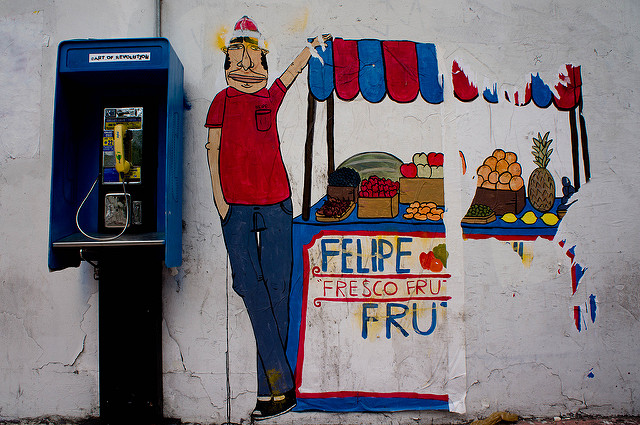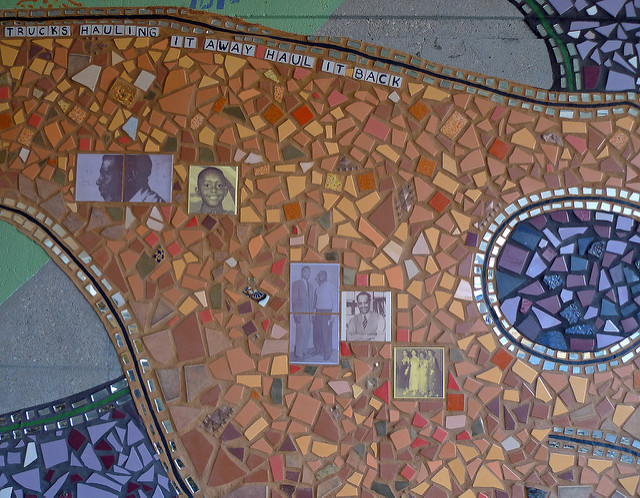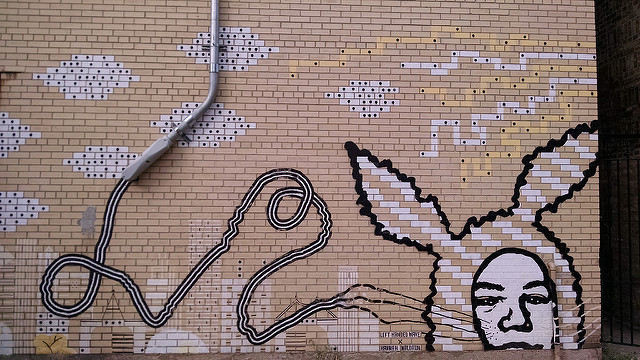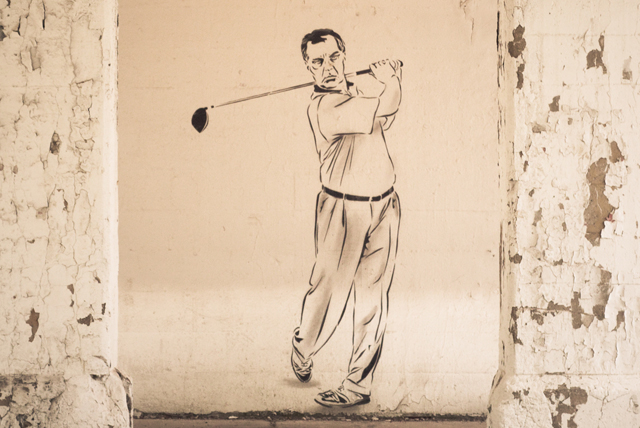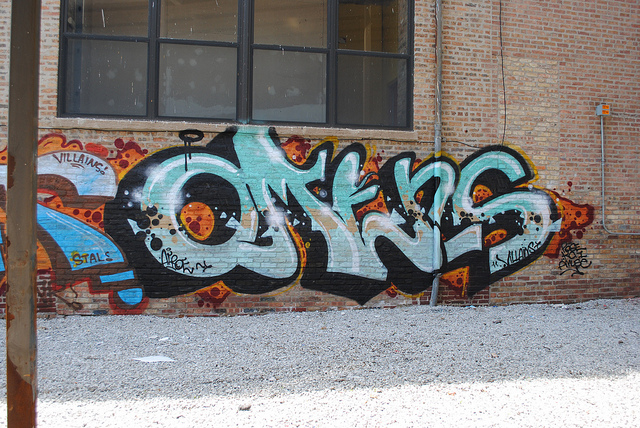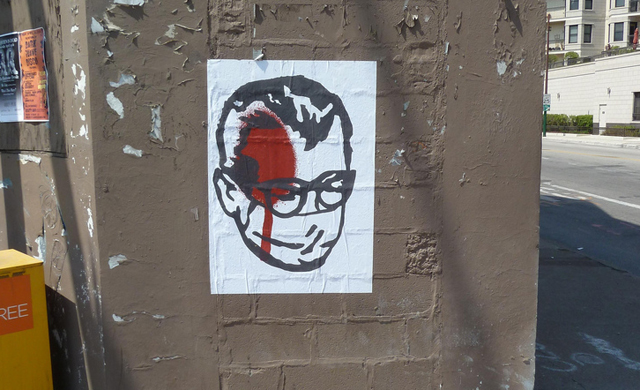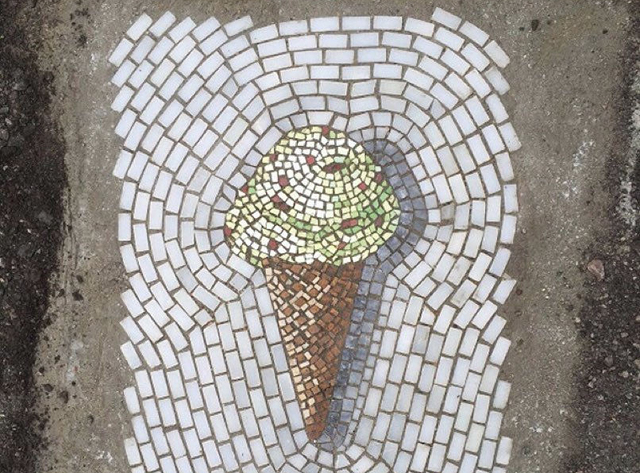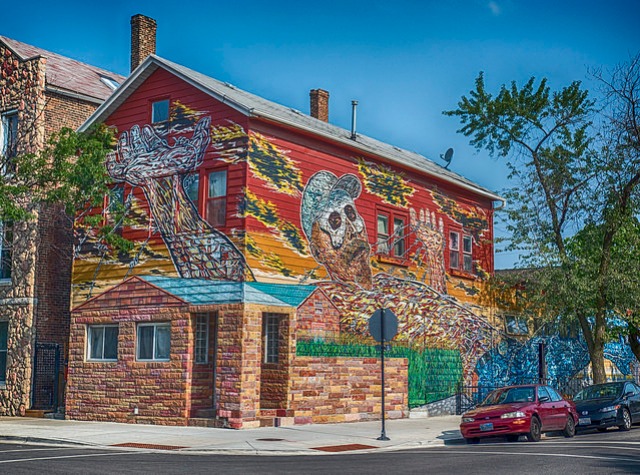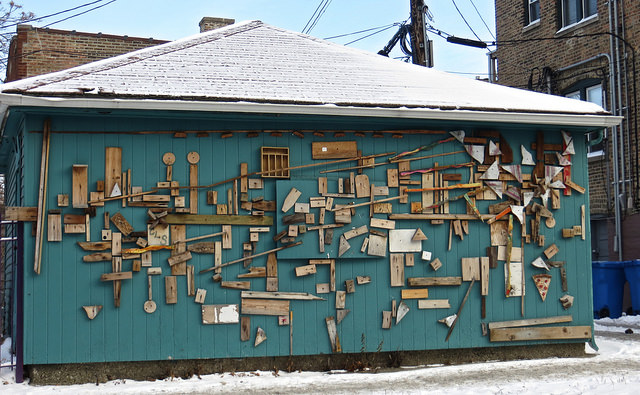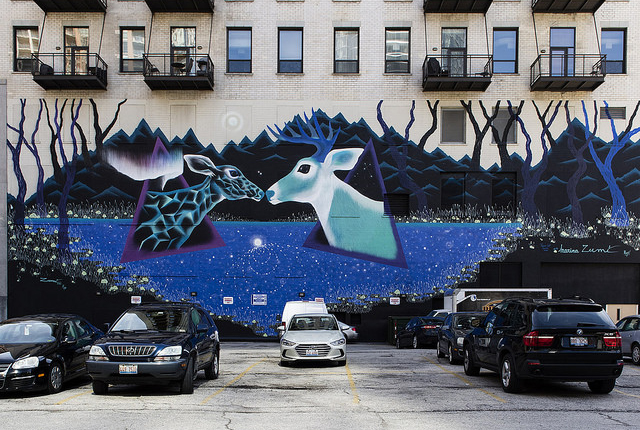16 Must-See Examples Of Chicago Street Art
By Mike Ewing in Arts & Entertainment on Sep 7, 2016 4:23PM
Art is everywhere in Chicago. It isn’t just hanging in a museum downtown or sitting idle in Millennium Park. It's sprayed onto walls and pasted on boarded-up windows across the city. Often-anonymous artists sometimes break the law to give their street art life, and street art is even more mainstream today than it was during the graffiti boom of the '80s. Likewise, some local artists are taking the art form to a whole new level.
As you travel through this art museum called Chicago, here’s a guide to some of the types of street art you should keep an eye out for, and some of our favorite artists who've left their mark on our urban canvas.
THE TAGS OF WEED WOLF: Basically Street Art 101, tags are the bane of the City’s Graffiti Blasters. Usually done freehand with everything from a marker to spray paint, tagging artists leave their mark everywhere from easy-to-access walls to impossibly-high water towers. And if you’ve taken the L anywhere, you’ve probably seen the name of Weed Wolf, one of the most prolific (and least fancy) taggers in the city.
OUT-THERE INSTALLATIONS BY BORED: Street art installations in the form of three-dimensional, often interactive pieces are fairly rare, but are always impressive in their originality. Anonymous artist Bored’s Monopoly popups in places like Logan Square poke fun of their host neighborhoods and confound drunks who find them late at night.
THE FINE ART MURALS OF HEBRU BRANTLEY: Large-scale murals featuring intricate scenes are often done legally, either by commission or on a permission wall, but unsanctioned pieces can be found in more out-of-the-way places too. Artist Hebru Brantley’s work is featured in fine art galleries and in the streets, but his distinct style is celebrated wherever its found.
DON’T FRET’S VERY-CHICAGO WHEATPASTES: Artists looking to throw up more intricate works on-the-fly sometimes choose to cover an area with a paste that’s equal parts flour and water and then stick up custom-cut paper pieces (hence the name). Wicker Park native Don’t Fret’s wheatepastes often feature jokes about everyday life and people in Chicago.
47TH STREET’S INSPIRING UNDERPASS MOSAIC: The best street art turns out-of-the way places into something special, including a few sanctioned mosaics that turn otherwise bleak underpasses into celebrations of community. Spearheaded by Carolyn Elaine and John Pitman Weber, the “bricolage” mosaic at 47th Street pays tribute to Kenwood residents.
The mural is located at the intersection of 47th Street and Lake Park Avenue
LEFT HANDED WAVE'S BUNNY SUIT CHARACTER: Street artists often develop signature characters that are featured prominently in all of their pieces, making it easier to identify the their work in the wild. Most of Left Handed Wave's work is starring a man with a secretive grin on his face, dressed in either a banana or bunny costume.
CRO’S POLITICAL STENCILS: Stencils cut out of paper or cardboard make for quick outlines that artists can throw up in an instant with a can of spray paint or two. As with any other form, artists usually include signature words, figures, or phrases. CRO’s pieces often poke fun at local political figures like Rahm Emanuel, Barack Obama, and Rod Blagojevich.
THE WILD STYLE OF OMENS: The elaborate bubble letters and symbols of Wild Style writing take the name-dropping element of a tag and elevate it to a form of high art. Although they’re sometimes unreadable to anyone other than fellow taggers and people on the scene, you’ve probably spotted the work of Omens and other writers scattered around Chicago.
OMNIPRESENT SURGEON STICKERS BY SWIV: Small and versatile, stickers can be mass-produced and slapped up in an instant. Swiv’s surgical mask-wearing character can be spotted tacked on to everything from street signs to bathroom walls.
JIM BACHOR’S POTHOLE INTERVENTIONS: Sometimes street art is used to both make a statement and directly intervene in its environment, usually to make a political point. Jim Bachor’s pothole mosaics both draw attention to a major issue in Chicago’s streets and address it.
THE NEIGHBORHOOD MURALS OF PILSEN: Sometimes murals celebrate the unique history, heroes, and ethnic culture of the neighborhood they’re painted in. There’s no better example than Pilsen, where artist Hector Duarte turned his house into a piece of public art. Check out Curbed's map of neighborhood murals for more.
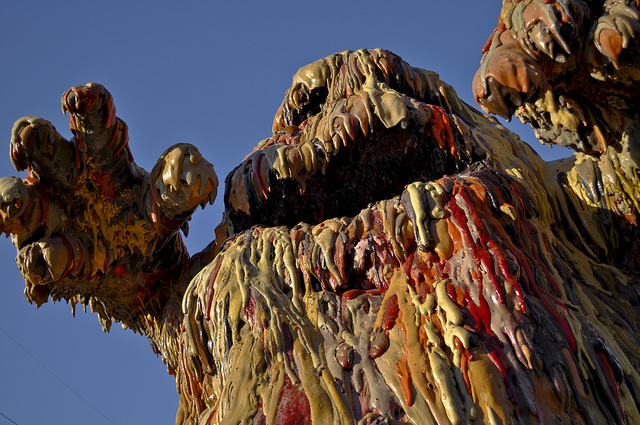
TONY TASSET’S BLOB MONSTER SCULPTURE: While the amount of materials needed for large-scale sculptures makes them pretty rare for “street” art, the recent appearance of naked Trump statues across the country shows it can happen. Locally, Tony Tasset’s melty Blob Monster is now permanently installed in the West Loop, but I swear I saw one just like it haunting the streets of West Town not too long ago.
THE MASSIVE ROLLER TAGS ON THE DAMEN SILOS: Street artists turn to unwieldy roller brushes, like the kind you would paint your walls at home, to compose blocky, intentionally drippy pieces. Their extended handles also make it easier to paint giant works in hard-to-reach places. Rooftops and the abandoned silos on the outskirts of Chicago attract plenty of these tags.
The Damen Silos are at 2860 S. Damen Ave.
THE WOODEN POST-GRAFFITI OF CLS: As street art continues to become more accepted, artists are branching out beyond materials like spray paint that were traditionally used because they were quick and cheap. One example is CLS, who builds their compositions using pieces of wood.
CRAFTY YARN BOMBERS: Just over a decade old, yarn bombing is street art for crafters. Yarn bombers anonymously attach knit pieces to everything from trees to statues. It’s delightfully nerdy but still brightens up otherwise drab places. And while none of the artists has really gained prominence for their work (yet), the otherwise anonymous bombers do it for the love of a good yarn.
INTERNATIONAL STREET ART ON WABASH: Perhaps nothing shows how much the city and businesses are embracing street art more than the Wabash Arts Corridor’s Big Walls, which give artists from Chicago and beyond over 40,000 square feet to work with on the sides of buildings in the South Loop. The works span the globe, including Argentinian Marina Zumi.
The Wabash Arts Corridor is at 635 S. Wabash Ave.
